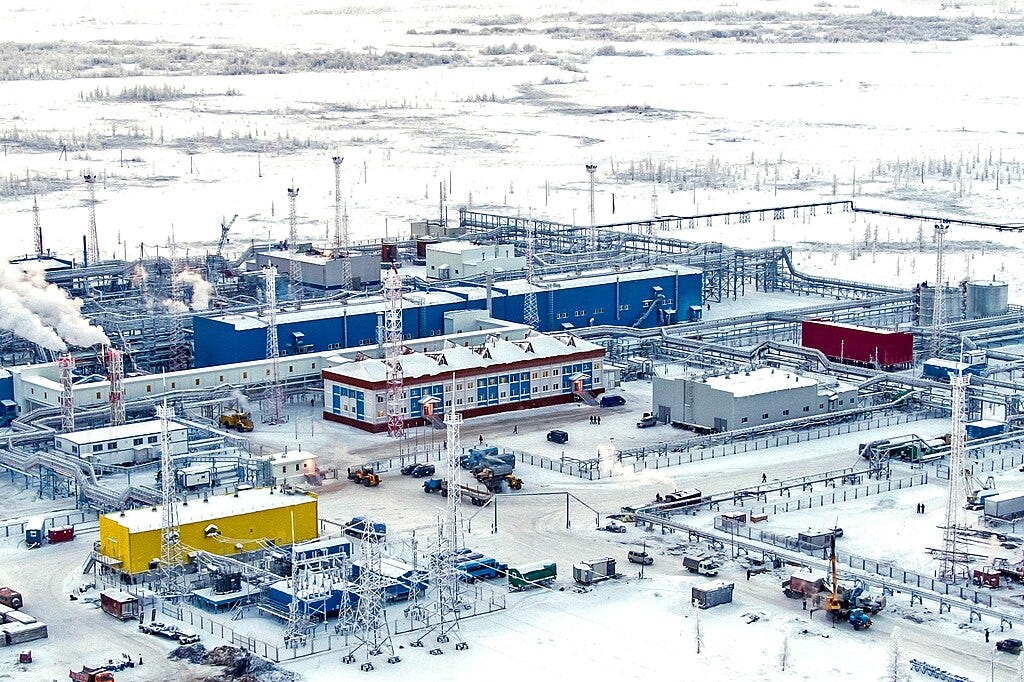EU Faces Energy Crunch as Russian Gas Flows Decline Again
Russian gas cutbacks push prices higher, testing Europe’s industries, sanctions resolve, and green transition plans.
Europe is once again confronting the specter of an energy crisis. Russian natural gas deliveries—already drastically reduced since 2022—have dipped further, rekindling fears of a difficult winter. While storage levels remain high, prices are edging upward, threatening industries still reeling from post-pandemic inflation.
Image: “Zapolyarnoye Field (Novy Urengoy): gas treatment facility,” by Government of the Russian Federation, CC BY 4.0.
The crisis is forcing Europe to accelerate diversification: importing more liquefied natural gas (LNG) from the United States and Qatar, strengthening pipeline links with Norway, Algeria, and Azerbaijan, and investing heavily in renewables. Yet diversification is slower and costlier than policymakers had hoped. Energy-intensive sectors—steel, aluminum, chemicals—face existential questions about competitiveness if prices stay structurally higher than in the U.S. or Asia.
Strategically, the crunch strikes at Europe’s quest for autonomy. Brussels aspires to act as a geopolitical power, but dependence on external suppliers constrains choices. Can the EU sustain sanctions on Moscow if households once again face spiking energy bills? Can it accelerate its green transition without triggering social backlash?
The stakes are clear: energy is both economic fuel and strategic leverage. Moscow knows this—and so do the governments in North Africa and the Gulf that Europe now courts.
Our Take: The EU’s red line is not measured in cubic meters of gas but in public tolerance. If households face another winter of soaring bills, political unity could fracture.

